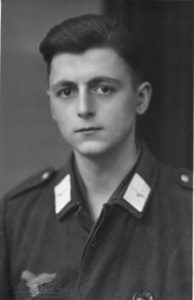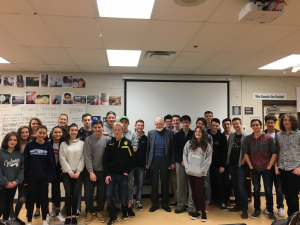Fear ran rampant among the civilians of America as they learned what truly was behind the new atomic energy. However, despite the negative effects these atomic bombs were creating, people were too amazed by the magnificent show of lights and smoke the bombs came with. The lure of atomic bombs incentivized people to come to Vegas. Although they came for the interest in the bomb, they left with an interest in gambling. This was due to the quick growth of the economy and the city of Las Vegas.
Atomic was all the rage back in the 1950’s. Thanks to the American military and government for creating and using the first nuclear bomb to end World War II, people were using this new form of amazing energy for everything. Atomic candy, atomic comic books, atomic cereal, atomic hats. The new brand “atomic” would sell anything and everything. The city of Las Vegas used this to their advantage where they had live testing of real atomic bombs for the public to see. People from all over the place would travel to the once empty and desolate desert to see these amazing mushroom clouds of atomic energy. Las Vegas became known as the “Atomic City”, a new favourite tourist destination.
Casino owners used these atomic bombs to their advantage and advertised their hotels for people to stay in. Everything was advertised as atomic, even the bright signs were atomic like with their neon lights. People were drawn into Vegas by this attraction and when in need of a place to stay, resorted to the casino/hotels where they would try their luck on the slots and give their money unknowingly to the mob. Many hotels with a view of the test site gained popularity such as the Stardust Hotel and Casino and the Last Frontier Hotel in Las Vegas. People came to see the blast and they were able to from the comfort of their hotel. They were advertised as places with a great viewing of the mushroom clouds, and therefore, people who came to see the atomic testing chose to stay in those hotels
Before nuclear energy was even invented Las Vegas was a city known by few. At the beginning of World War Two, in 1940, Las Vegas had a population of only 8,400. It more than doubled within 5 years due to the sudden interest in gambling and casinos. By the 1950’s there were 44,600 people living in Vegas and 8 million people visited annually. In 1951 the Nevada test site was started and atomic bombs were being dropped, some even for the public to see. When these tests started begin available for the public to nsee, Las Vegas had a huge influx in visitors as well as business. Before these bombs became popular to the public, Las Vegas was a much less desired vacation spot. People would fly in from all over the world to see this new and spectacular bomb being blown up. Luckily for the casino owners you could see these atomic tests from the hotels and casinos on the strip. Many times residents even threw cocktail parties and gathered outside while a test was being carried out. The economy grew as more and more people were staying on the strip and spending their money on the food and hotels to see the glorious mushroom clouds from the atomic bombs. And in the meantime while waiting for the showing of the bomb, they would pass time by spending their money on shows or in the casinos. Therefore, the mob grew its power over the economy.
The lure of atomic bombs incentivized people to come to Vegas. Although they came for the interest in the bomb, they left with an interest in gambling. People feared that without the atomic bomb showings, Vegas would lose its attraction. However, the mob made sure that Vegas would be around for awhile by created hotels and casinos that were just as exciting. Although without the atomic bombs, Vegas wouldn’t have become as popular of a destination and therefore, the economy wouldn’t have done as well without it.



